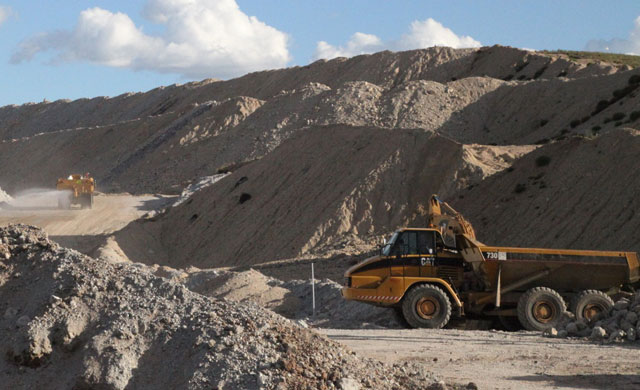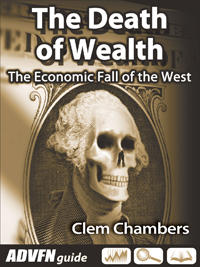London stocks on the FTSE 100 gained in early trade on Friday as investors mulled better-than-expected UK GDP data.

At 0822 BST, the FTSE 100 was up 0.8% at 7,972.53.
Figures released earlier by the Office for National Statistics showed that the economy expanded by 0.5% on the month in February, comfortably beating consensus expectations for a 0.1% increase. This followed no growth in January, revised up from a 0.1% decline.
Services sector growth was 0.3% in February following a 0.1% expansion the month before, and was the largest contributor to the monthly expansion in GDP.
The data also showed that production output grew 1.5% following a 0.5% drop in January, revised up from a 0.9% fall. Construction output grew 0.4% in February following a 0.3% contraction the month before, revised down from a fall of 0.2%.
Liz McKeown, director of economic statistics at the ONS, said: “The economy grew strongly in February, with broad-based growth across both services and manufacturing.
“In services, we saw strong performances from sectors like computer programming, telecoms, and car dealerships. Meanwhile, in manufacturing, electronics and pharmaceuticals led the way, and car production also recovered after a run of weaker results.
“Looking at the broader picture, the economy has grown solidly over the past three months, with widespread gains across the services sector.”
Richard Hunter, head of markets at Interactive Investor, said: “A surprise boost in manufacturing and production were major contributors, and the reading could provide some minor insulation against the potential challenges to come.
“Given the tariff backdrop as well as businesses who are delaying investment and hiring decisions, it remains to be seen whether those headwinds will force the Bank of England to accelerate its interest rate easing plans.”
Meanwhile, industry data showed that retail footfall tumbled in March after the late timing of Easter weighed heavily on the high street.
Last year, Easter – a key shopping holiday for many retailers, especially grocers – fell in March. This year, however, it falls notably later, at the end of April.
As a result, tough comparatives meant that total UK footfall was down 5.4% year-on-year in the five weeks to 5 April, sharply lower than February’s 0.2% decline.
The BRC-Sensormatic data also showed a 4% decline in footfall on high streets, a 5.8% slide at shopping centres and a more marginal 1.9% fall in retail parks.
The exception was Mother’s Day, which fell on 30 March and saw a 13.4% uplift year-on-year in high street footfall.
Helen Dickinson, chief executive of the British Retail Consortium, said: “With Easter falling in April, footfall in March could not compete to last year, when families were already enjoying their Easter holidays.
“Despite this, footfall in retail parks held up better than other locations, as the expanding offer of hospitality and leisure outlets alongside retail, together with free parking, attracted more shoppers.
“Similarly, London saw only a minor dip in footfall compared to other parts of the country.”
However, she warned: “Global uncertainties from tariffs and a potential economic slowdown could reduce the appetite for shopping trips in the coming months.”
Andy Sumpter, EMEA retail consultant at Sensormatic, said: “After a bumpy few months, March made for disappointing footfall, as shopper and business confidence remains subdued, not helped by ongoing economic uncertainty and pre-spring statement jitters.
“Retailers will be hoping that strong Easter trading could help balance out a slow start to spring.”
In equity markets, energy giant BP fell after saying it expects to report lower first-quarter upstream production than in the previous three months.
In a trading update, the company said it saw slightly higher volumes in oil production and operations, but expected lower output in gas and low-carbon energy. Gas marketing and trading is expected to be “weak”, it added.
BP was also affected by a downgrade to ‘neutral’ at UBS.
On the upside, precious metals miner Fresnillo shone, while heavily-weighted miners Glencore, Rio, Antofagasta and Anglo American advanced.
Croda fell after a downgrade to ‘sell’ at Goldman Sachs and Schroders was knocked lower by a downgrade to ‘underperform’ at Bank of America Merrill Lynch.
Top 10 FTSE 100 Risers
| Sponsored by Plus500 |
|
| # | Name | Change Pct | Change | Cur Price | |
|---|---|---|---|---|---|
| 1 |  |
Fresnillo | +4.06% | +37.50 | 960.50 |
| 2 |  |
Wheaton Precious Metals Corp. | +1.67% | +100.00 | 6,080.00 |
| 3 |  |
Tesco Plc | +1.56% | +4.90 | 319.50 |
| 4 |  |
British American Tobacco Plc | +1.52% | +47.00 | 3,134.00 |
| 5 |  |
Haleon | +1.37% | +5.00 | 370.50 |
| 6 |  |
Smith & Nephew Plc | +0.86% | +8.20 | 965.80 |
| 7 |  |
Unilever Plc | +0.85% | +39.00 | 4,609.00 |
| 8 | 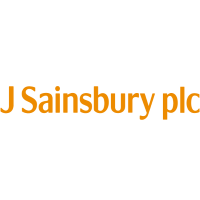 |
Sainsbury (j) Plc | +0.79% | +1.80 | 230.60 |
| 9 |  |
Coca-cola Europacific Partners Plc | +0.76% | +50.00 | 6,640.00 |
| 10 |  |
United Utilities Group Plc | +0.67% | +7.00 | 1,052.00 |
Top 10 FTSE 100 Fallers
| Sponsored by Plus500 |
|
| # | Name | Change Pct | Change | Cur Price | |
|---|---|---|---|---|---|
| 1 | 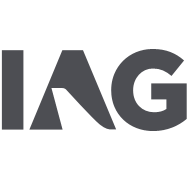 |
International Consolidated Airlines Group S.a. | -3.74% | -9.20 | 236.50 |
| 2 |  |
Barclays | -3.29% | -8.55 | 251.70 |
| 3 |  |
Smurfit Westrock Plc | -2.59% | -81.00 | 3,050.00 |
| 4 |  |
Carnival Plc | -2.47% | -30.50 | 1,202.50 |
| 5 | 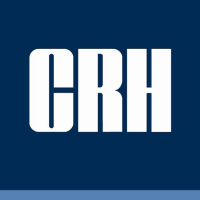 |
Crh Plc | -2.47% | -160.00 | 6,320.00 |
| 6 | 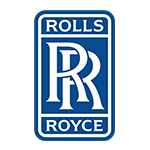 |
Rolls-royce | -2.45% | -17.00 | 676.60 |
| 7 |  |
3i Group Plc | -2.35% | -91.00 | 3,788.00 |
| 8 |  |
Informa Plc | -2.26% | -15.40 | 667.40 |
| 9 |  |
Experian Plc | -2.25% | -77.00 | 3,341.00 |
| 10 |  |
Wise Plc | -2.19% | -20.50 | 914.50 |
US close: Stocks hand back some of previous session’s historic gains
Major indices closed sharply lower on Thursday as the previous session’s impressive rally seemingly ran out of steam.
At the close, the Dow Jones Industrial Average was down 2.50% at 39,593.66, while the S&P 500 lost 3.46% to 5,268.05 and the Nasdaq Composite saw out the session 4.31% weaker at 16,387.31.
The Dow closed 1,014.79 points lower on Thursday, giving back much of Wednesday’s whopping 2,962.86 point gain that came as Donald Trump announced a 90-day pause on his so-called “reciprocal” tariffs.
Thursday’s losses come hot on the heels of yesterday’s surge, with the Dow Jones delivering its biggest percentage increase since March 2020 and the S&P 500 turning in its third-largest single-day gain since World War II.
When asked why he chose to pause the tariffs, Trump said he thought people were “jumping a little bit out of line” and had gotten” a little bit yippy, a little bit afraid”. Trump also said he was not ruling out the possibility of an extension to the pause, stating, “we’ll have to see what happens at that time”.
While the president did choose to halt his tariffs until July, Trump also moved to up the tariff rate on Chinese-made goods from 104% to 125% to 145%, effective immediately, but stated Beijing and Washington were close to making a “very good deal”.
On the macro front, the cost of living in the US came in under economists’ forecasts in March, with inflation dragged down by a slump in energy quotes. According to the Department of Labor, in seasonally adjusted terms, the Consumer Price Index dipped by 0.1% month-on-month, missing consensus estimates for a drop of 0.2% and serving to push the year-on-year rate of advance in headline CPI down to 2.4%. Consensus had been that inflation would slow from 2.8% to 2.6%.
Energy prices dropped by 2.4% over the month, helping to offset a 0.4% rise in food prices by a big margin. Core CPI, which excludes food and energy prices, on account of their volatility, also undershot forecasts, with underlying Core CPI prices edging up 0.1% month-on-month and 2.8% year-on-year, missing estimates of a 0.3% and 3.0% increase, respectively.
Elsewhere, Americans lined up for unemployment benefits at an accelerated pace in the week ended 5 April, according to the Labor Department. Initial jobless claims rose by 4,000 to 223,000 last week, in line with market expectations, while continuing claims fell by 43,000 from the previous week’s downwardly revised level to 1.85m, well below expectations of 1.88m. The four-week moving average, which aims to smooth out week-to-week volatility, was unchanged from the previous week’s unrevised 223,000 print.
In the corporate space, companies with significant exposure to China traded lower on Thursday, with Tesla and Apple shedding 7.3% and 4.2%, respectively.
Friday newspaper round-up: Prada/Versace, WeightWatchers, sewage plant
The EU will not rip up its tech rules in an attempt to reach a trade deal with Donald Trump, the bloc’s most senior official on digital policy has said. Henna Virkkunen, the European Commission vice-president responsible for tech sovereignty, indicated the EU was not going to compromise on its digital rulebook to reach an agreement on trade with the US – a key demand of Trump administration officials. – Guardian
Prada has agreed to buy the Versace fashion brand for €1.25bn ($1.38bn) from the fashion conglomerate Capri Holdings. It comes after months of speculation about a potential deal to combine the two Italian fashion houses and, more recently, rumours that the acquisition was set to collapse after market upheaval in response to President Trump’s tariff policies. – Guardian
WeightWatchers is preparing to file for bankruptcy amid a boom in blockbuster drugs targeted at dieters. The New York-headquartered company is preparing to begin Chapter 11 proceedings over the coming months as part of a plan to hand control to creditors, according to reports. It comes as weight loss drugs such as Wegovy have exploded in popularity on both sides of the Atlantic, sparking a collapse in demand for services such as WeightWatchers. – Telegraph
The Government is under fire for relinquishing swathes of Cambridge’s green belt for a £400m sewage plant as big as Wembley Stadium. Steve Reed, the Environment Secretary, has approved controversial plans to relocate Anglian Water’s sewage plant in Milton to Honey Hill, as part of a major development across Cambridge which will include 8,000 new homes. – Telegraph
Central banks are under pressure to tighten rules on the amount of leverage taken on by hedge funds in the wake of the alarming tremors in the US government bond market on Wednesday which were seen by some as forcing President Trump’s tariffs U-turn. One former senior Bank of England policymaker told The Times that the high leverage — the use of borrowed funds — used by hedge funds to make bets on US bonds, known as treasuries, was one of the reasons for the unusual sharp fall in prices and spike in yields on Wednesday. – The Times


 Hot Features
Hot Features



